Ram loads upscale features under familiar look
By John Gilbert
It takes a great truck to be competitive among full-size pickup trucks, and whether you examine trucks anywhere from Ford, Chevrolet, Ram, Toyota, to GMC, every one is impressive in capability. It takes something extra to break through that brand loyalty and lure a truck buyer to switch allegiances.
Dodge apparently had that in mind when it revised the 2013 Ram — which is no longer a “Dodge Ram” but simply a “Ram” nowadays. If it’s going to take special features and conveniences to attract truck buyers, the new Ram is loaded, from its kneeling stance for easy entry and exit via its adjustable ride-height 4-wheel air-suspension, to its high-tech V6 complement to the cylinder-deactivating Hemi V8, both operating through a very slick rotary-knob-controlled 8-speed transmission, to its inner comfort and connectivity.
Aiming at class-leading hauling, towing and fuel economy, the Ram is also out bolster its forceful reputation by setting new standards for interior comfort and futuristic Uconnect connectivity — places where the competitors might have previously had an edge.
From the outside, the Ram doesn’t look all that different from the current 2012 model. But look closely and you see that the big, bold crosshairs grille is now bigger and bolder, growing 30 millimeters taller, above a new lower fascia. The top-of-the-line Laramie Longhorn has what Dodge calls a “heroic” bumper that is one-piece, real steel.
Appearance-wise, the Ram offers various looks, with grilles that range from black, to body-color, to silver, and on up to the Laramie Longhorn, which has a very busy silver mesh behind the crosshairs, and which seem to me to be too fancy for a work truck, no matter how plush and feature-filled the interior might be. The mesh looks like an escapee from Range Rover might have designed the look. However, part of the Ram’s improved aerodynamics — a 0.36 coefficient of drag — is that slats close off the grille when cooling is sufficient to not need extra air, which further reduces the aero drag.
Speaking of real steel, the Ram, which came out in its current form in 2009, has an entirely new frame made with an increased amount of high-strength steel, which can be made thinner and still stronger to improve stiffness and reduce weight. The truck body, bumpers and cross-members are also stronger and lighter.
Under the hood, the 5.7-liter Hemi returns, but its less-potent 3.7-liter V6 partner has been replaced by Chrysler’s new 3.6-liter Pentastar V6. The engine, which actually replaced seven V6 engines ranging from good to mediocre, is the true star of everything Chrysler, Dodge, and Jeep put on the street these days, and its move into the Ram pickup is more than just impressive. It, alone, might be a deal-breaker for truck-buyers who don’t need the extra heft of a V8.
The 3.6 Pentastar, with its dual overhead camshafts and variable valve-timing, is built at a 60-degree-angle V, of high-strength diecast aluminum, with cast iron bore liners for the cast aluminum pistons. Six-bolt main-bearing caps and forged connecting rods assure strength, which is good, because the 3.6 churns out so much more power that for the first time, the Ram V6 is available with 4-wheel drive and even the humungous crew cab. It has 305 horsepower at 6,400 RPMs, and 269 foot-pounds of torque, peaking at 4,175 but maintaining 90 percent of full torque from 1,800 to 6,400 RPMs. The V6 has a high compression ratio of 10.2-1, but it will still burn regular fuel.
The 3.6’s 305 horsepower represents an improvement of 45 (8 percent) over the 3.7 — which will continue in the base Tradesman models — and the 269 foot-pounds are a 14-percent increase in torque. While Rams used to only use V6es in 4X2 trucks, the new 3.6 V6 has fuel economy figures of 17 city and 25 highway, and still accelerates 0-60 in 7.5 seconds, and hauls trailers up to 6,500 pounds.
For heavy-duty work, the 5.7 Hemi has variable valve-timing and cylinder shutoff, which idles four of the eight cylinders when cruising between 1,000-3,000 RPMs. It also can be selected with stop-start, which shuts off the engine during stops at lights or during work duties, and restarts smoothly and effortlessly when the driver steps off the brake. That requires a high-endurance starter and a DC-DC converter to keep the accessories going during stoppages, and a heavy-duty battery.
A vital part of the new Ram’s success is the new 8-speed automatic transmission, which made its debut in the Chrysler 300 and the Dodge Charger automobiles, and moves with very little modification into the Ram. It will replace the 4-speed automatic in the current V6, and will be moving up to the V8, where it will join the very good and quite-new 6-speed, and improve the Hemi’s fuel economy by an anticipated 10 percent.
The new 8-speed was designed by Germany’s ZF — pronounced “Zed-F” — and is now built by Chrysler under its own licensing in Kokomo, Ind. Having eight speeds means an expanded range of ratios, from 4.74 in first gear to 0.67 in eighth, where anything under 1.00 is overdrive. The wider ratios are an obvious advantage to both acceleration and high-speed cruising, and having more steps between the eight gears lessens the force of each shift for an improvement in shift quality. The inner sophistication of the transmission is best described by the fact it has over 40 shift maps, each of which are determined by computer, which reads engine speed, torque, and other driving demands, then selects the best ratio.
Shifting the transmission is done by a very Jaguar-like rotating switch. In every Jaguar, a small puck-like cylinder rises from the console, and you engage a gear, or park, by turning the thing. ln the Ram, the same sort of puck is located fixed on the center stack, in easy reach of the driver, and I found it more intuitive than the console switch on the Jag.
That’s a small part of the interior refinements in the Ram, which has redesigned cupholders, upgraded interior fabrics, with all media ports in the console’s center stack area. The Longhorn has real wood trim, of some sort of European open-pore wood, but the same guy who overdid the grille also might have been responsible for adding glare-attracting bright silver trim to the center-stack surround.
An optional display screen offers a full-color 7-inch view when you back up, and it allows viewing of trailer hookups while also including all pertinent trailer data.
The 3.6 V6 Ram is 130 pounds lighter than its predecessor, and the Pentastar V6 and the new 8-speed transmission account for 76 of those pounds. The 8-speed with the Hemi V8 is 30 pounds lighter than the 2012 Hemi with the 6-speed. Electric power steering operates the mechanical rack-and-pinion steering, and eliminates the need for a power-steering pump.
Price structure starts with the Tradesman 4X2 at $23,585; SLT models range from $28,345-$36,835; Sport goes from $33,030-$42,500; and the Laramie from $38,710-$48,515. Options, of course, including the air suspension, can boost all those prices. Production of the 2013 Ram started in August, and it will come out for the last quarter of 2012, a year when the Ram already is 23 percent ahead of 2011, year-to-date.
When the current Ram came out in 2009 was the addition of Ramboxes, the cleverly designed narrow little storage bins located in both sides of the bed walls, with hinged covers running along the top edge. It has been a popular feature, and it is enhanced on the new truck by being lockable at one touch, along with the tailgate, whenever the driver hits the key fob to lock the doors.
One of the 2013’s big features is the addition of air suspension, which allows adjustable ride height, something that is common among off-roading SUVs, but is unprecedented in pickups, which spend a lot of their working lives clumping over boulders and uneven land on ranches, farms, and on hunting expeditions.
The Ram can be adjusted to four heights, starting with an off-road setting that raises clearance by 2 inches; a lesser off-road setting increases ride height by a half-inch. The normal setting is for normal highway driving. Then there is the entry-exit setting, which causes the Ram to drop down 2 inches in ride height for easier climbing in or hopping out. A fifth mode that can’t be set is for aerodynamics, automatically lowering the Ram at 60 miles per hour to reduce aerodynamic drag.
As a final touch to show how far truck folks have come in recent years, the “next generation” Uconnect Access makes its debut, turning the Ram 1500 into a Wi-Fi hotspot. Voice-recognition can be activated, or coordinating with steering wheel controls, touchscreens and traditional controls, all of which offer occupants a variety of ways to access and operate the numerous gizmos. Access allows alternative ways to summon up and use all the various applications, including using the web, in case the optional 8.4-inch touchscreen seems inadequate.
Acura TSX perfect alternative to Accord
By John Gilbert
If you were a loyal Honda Accord buyer, and you knew a new-generation Accord was coming out in September of 2012, would you consider an Accord-like vehicle from Honda that meets or exceeds every feature you always wished the Accord possessed, for about the same money?
If you would you pay $32,000 for the much-anticipated 2013 Accord, would you pay $30,000 to move upscale to the Acura brand for a TSX Special Edition? The current Accord grew too large and hefty, and while the new one might be a little sleeker, a little sportier, with a bit more punch, but with the same good fuel economy, and yet the TSX might be the perfect alternative car.
But, as they say in the car biz, you might not want to wait.
The current 2012 Acura TSX Special Edition is almost a secret, and it definitely is a secret bargain, which combines sporty performance and handling Accord buyers can only dream of, with enough roominess to take care of the Accord’s workaday requirements. And, it might not be around very long, even though its technology and sportiness will never go away.
Honda is usually the best auto manufacturer at keeping secrets, but the summer of 2012 has been filled with spy photos, news leaks and rumors about the new Accord. We’ve been treated to advance reports that the new Accord will be a little smaller than the large current model, which spilled over the boundary from midsize to full-size. We’ve also been teased that the new Accord will have a new generation of engine technology, something to springboard it forward toward the engineering standard we had grown used to expecting from Honda.
Meanwhile, there are all sorts of rumors that Honda’s upscale Acura line, which just added an entry-level ILX to its stable, is planning to phase out the TSX because it’s similar in size and bumps up against both the larger TL and the new ILX. That would leave Acura with the RL luxury line, a TL that could get slightly reduced in size to swallow up the sportier TSX, and the ILX — along with its SUV tandem, the MDX and just-introduced new-generation RDX.
If those rumors are true, the enthusiasts among Acura shoppers will be sorry to see the TSX leave the scene. The Acura line always has had its luxury cars, such as the original Legend, which grew up to become the RL, and it always has had an upscale sporty representative, too. There was the original Integra, which came in sleek 4-door hatchback or 2-door coupe form. I owned one for several years, and it was so thoroughly enjoyable and trouble-free that my older son, Jack, wound up with one too. Years later, he wishes he still had it.
Acura also had the incomparable 2-seat mid-engine sports car, the NSX. Whenever anybody asks me that of all the cars I’ve driven over 40 years of automotive testing, which single car would I most want to own, my answer steadfastly remains: the Acura NSX.
It was from that heritage that Acura also spun off twin models — the RSX 2-door coupe and the TSX, which was a 4-door sedan model, that was pretty much the RSX stretched to house a family, with the same sporty engine, transmission and suspension. As years went by, Honda, remaining separate from Acura, decided to hike the performance level of the Civic Si by giving it the RDX (and TSX) engine, with its dual overhead camshafts instead of the dependable single-cam version of the Civic, and to add firmness and handling to the suspension. It even bolstered the Civic Si with traction control, something the RSX lacked.
In the process, the RSX remained an automotive bargain, but it became difficult to justify charging more for it when the less-expensive and sporty Civic Si, with traction control, was available. So Honda eliminated the RSX, a move that, in a way, might be a predictor for the fate of the future TSX, if rumors hold.
To give the TSX room to grow, Honda added some luxury touches, and a year ago offered an optional V6 along with its high-output 4, separating it a bit from the Civic Si sedan. The 4-cylinder version still seems like all the engine any TSX buyer could want or need, especially when the TSX was able to use the 2.4-liter 4, with its dual-overhead camshafts for higher revving and more horsepower.
For 2012, the Civic Si is offered with a “new” engine, which isn’t new at all except for Civic use. It is the same potent 2.4-liter 4-cylinder that has been a strong and familiar powerplant to Honda and Acura buyers for nearly 20 years — and which currently can be found in the RDX crossover SUV, and the TSX sedan.
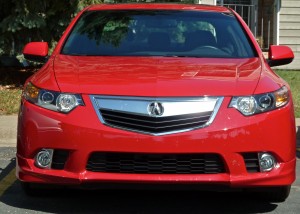
Where its larger siblings, the RL and TL, have undergone curious styling revisions, the TSX is now the most tastefully styled of the brand.
All of which brings us around to a bright red 2012 Acura TSX Special Edition, which, after a week-long road test, has become my favorite vehicle in the entire Acura line. It has none of the heft of the RL — or the current Accord, by the way — and it is unburdened by the over-reaching styling wanderings that took the TL from being the most beautiful car in Honda’s entire universe into some weird, buck-toothed wilderness, complete with chrome-splashed obnoxiousness. The TSX also has more of a sculptured sportiness and some of the luxury leanings of the new ILX.
The Special Edition is more than just the latest TSX. It is, as the name says, special.
The test car shows that Acura designers could, after all, restrain themselves from fastening that big, wide swath of chrome as a beak on all its models. That’s the drawback of a so-called “signature” feature; if it has universal appeal, great, but if it doesn’t, well, the TL’s appeal can disappear, and everybody gets the overdone overbite. The TSX has that widened upper lip on the grille, but it is less intrusive than the other Acuras, presumably because somebody at the home office tackled the radical designer before he could do similar damage.
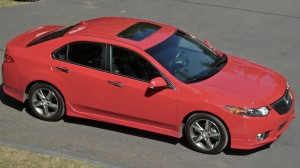
The Special Edition TSX 2.4-liter 4 has 201 horsepower to be guided by a 6-speed manual transmission.
While styling is subjective, I like the subtle contours of the TSX, but its best feature is what’s inside and under the skin.
The 2.4-liter 4-cylinder engine, with 16 valves and dual overhead cams, with i-VTEC variable valve timing control — which set Honda apart from less-high-tech rivals back in 1990 — and with a smooth-as-silk 6-speed manual transmission, brings the TSX fully to life as a sports sedan of the highest order.
We will find out by September of 2012 if all the new Accord rumors are true, but the most prominent one remains the addition of a new engine — a 2.4 with DOHC refined with direct injection, which should help fuel efficiency and performance, and supposedly will deliver 181 horsepower. The new Accord also is supposed to get a CVT, continuously variable transmission.
Yes, direct injection would be great on the 2.4, but until then, the TSX has the same engine without direct injection, but it has been refined to put out 201 horsepower. Hmmm…less refinement and more horsepower?.
The test TSX had a sticker price of $32,310, which includes Special Edition features such as a full underbody sound and aero kit, exclusive Special Edition seats, exclusive Special Edition lighting, with badges to show that it’s the Special Edition, and aluminum pedal plates. The intriguing thing is that after adding up the included upgrades, which total $2,500 if you could buy them, the car instead gets a Special Edition discount of $1,500, which drops the price to $30,810.
A standard delivery charge of $885 afflicts both sticker prices, and while it zips the total price over $33,000, it pushes the Special Edition price only up to $31,695 — still less than the standard TSX without the upgrades. That, is a bargain.
Hyundai has generated a revolution of sorts by adding such details as direct injection to the dual overhead cams of its 2.4-liter 4-cylinder, reaching 200 horsepower. The new Accord coming out supposedly will have 181 horsepower. The TSX Special Edition’s 2.4 hits 201 horsepower, and that’s without direct injection.
The TSX handles with firm efficiency, too, and from the driver’s seat, everything falls into place. That includes the shift lever, which zips through the six gears with optimal smoothness, adding fun and sportiness to the 30-miles-per-gallon efficiency. As automatic and dual-clutch transmissions become more and more sophisticated, there are fewer and fewer stick shift models available. The TSX proves there is still a place for them, for those companies, and consumers, who still prefer the basic manual shifting. Especially this sort of manual shifting.
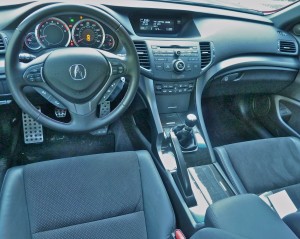
Controls are sporty and ergonomically sound, with non-glare black from its soft-toiuch dash down to the console.
I’m not sure all the buttons and controls on the center stack are necessary, and my iPhone was difficult to code into the hands-free system, but the center stack and console are refreshingly simple, even austere, because everything is a matte black, from the soft-touch texture of the dashboard to the button-filled center stack and on down to the console. Speedometer, tachometer and other instruments are simple and straightforward, and nowhere is there the bright, glare-catching accents of glossy silver trim that are so common on new cars, where a dash of flash seems more prominent than glare-free ergonomics..
In short, it’s the type of interior command post that gave Honda the reputation it richly deserved for ergonomic excellence. The same sort of ergonomic excellence BMW used to be able to boast about before iDrive, and now only seems to appear in base models.
My wife, Joan, who has become an expert at the benefits of coordinated energy for physical work with humans, was greatly taken by the TSX’s attributes. “I like the aero quality of the design, which makes the overall look pleasing,” said Joan. “The inner design is subtle and classy, and not flashy. The design inside and out made the car feel comfortable to look at, and it has all the energy of the old Hondas.”
I never thought of those particular attributes, but I couldn’t agree more. Maybe the new Accord, with its newly redone 2.4, will be as sporty, and it will offer a 6-speed stick shift along with its CVT automatic. But the Acura TSX is here, now, and it offers all of the attributes that established Honda as a high-tech leader and benchmark of inexpensive sporty sedans. If it is going to go away, the TSX Special Edition might be one to capture and hang on to.
What if Jerry Sandusky had been a priest?
By John Gilbert
The aftermath of the Penn State scandal surrounding assistant football coach Jerry Sandusky’s sexual molestation of at least 10 young boys over a 15-year period, continues. Sandusky is in prison, for life, we assume. Penn State’s president, vice president, and athletic director are dismissed in disgrace for agreeing to suppress the reporting of Sandusky’s hideous trail of the worst criminal conduct. And coach Joe Paterno was fired, and died, but continues to be disgraced because he promoted covering up the scandal for the sake of the Nittany Lions reputation.
It is absolute overkill how vindictive the American public and sports media have been in trying to heap disgrace and punishment on Penn State’s football program. We can all agree that the law says anyone who knows anything, or suspects anything, about child molestation must report it to authorities or is guilty of violating the law as well, and at Penn State, they blew it.
With that in mind, let’s reread a story on the front page of the Minneapolis Star Tribune recently. It was well-written by Abby Simons, and told the story of Jim Keenan, 45, who claimed he had repressed memories about being sexually abused and molested by a former Catholic priest, Thomas Adamson, in 1980 or 1981, when Adamson was serving at Church of the Risen Savior in Burnsville, MN. Adamson was defrocked in 1984.
Keenan filed a lawsuit six years ago against the Archdiocese of St. Paul and Minneapolis, and the Diocese of Winona, claiming church officials there knew of the sexual abuses and covered it up. The church’s defense was that the six-year statute of limitations had run out, and Ramsey District Judge Gregg Johnson agreed, dismissing the case in 2010 with the ruling that the repressed-memory stance was unreliable. A Minnesota Court of Appeals, however, ruled in favor of Keenan and his attorney, Jeff Anderson, and reversed that ruling a year ago, leading the case on to the Minnesota Supreme Court. The Supreme Court ruled 4-2 that there was no concrete evidence the repressed memory condition was reliable, and overturned the Court of Appeals decision in July of 2012.
In the course of the litigation, the Star Tribune article says, Anderson obtained an archdiocesan list it had compiled showing 33 priests who had been accused of sexual abuse involving minors, and the Diocese of Winona has a similar list of 13 more such abusers. That’s not separate cases, but 46 total priests who have been accused of sexually molesting children.
The Ramsey district judge ruled those lists should be sealed, pending the outcome of the Minnesota Supreme Court’s decision on the case. However, when the Minnesota Supreme Court threw out the lawsuit by a 4-2 vote, with the majority saying repressed memory is not scientifically established, the verdict also left permanently sealed the list of those 33 priests in the Twin Cities and 13 more in the Winona Diocese.
How can that be? If it is a law that anyone knowing or suspecting child sexual abuse must report it, how can the Catholic Church and its regional hierarchy justify putting together a list of priests accused of sexual abuse of youngsters, and not have to report it to authorities or make it public? How can they be innocent while knowingly suppressing this information?
Where are the protests demanding dismissals, trials, and prison sentences for the succession of priests, bishops, cardinals, on up to the Pope, who presumably knew of the abuse charges of some or all of the 46 abusers? Where are all those righteous, anti-Penn State columnists and editorialists who rightfully ripped Jerry Sandusky for using his power as a football assistant coach to abuse kids, and why aren’t they reacting similarly to the dozens of cases of child sexual abuse by priests right here in Minnesota? Is it reprehensible for an assistant college football coach to be a pedophile, but it’s apparently tolerated and allowed to be covered up when similar acts are done by priests?
In Rochester, Minnesota, former priest Thomas Adamson, age 79, is living his life in his own manner, because despite being named in multiple lawsuits, he has never faced criminal charges. Maybe he feels lucky to have gotten away from all but his own conscience. We can only wonder what he was thinking about as he watched, listened to, and read the avalanche of venom aimed at Jerry Sandusky during his trial, and Penn State in the aftermath. Maybe he sympathizes with Jerry Sandusky. And maybe he realizes that Sandusky would have been much better off if, instead of being an assistant football coach, he had been a priest.
NCAA crushes Penn State; Olympics start
By John Gilbert
NCAA president Mark Emmert appeared righteous and committed when he stood in front of the television cameras and media throng to announce the punishment that will render Penn State’s proud football team to certain also-ran status.
For not acting more responsibly in reacting to the disclosure that former assistant football coach Jerry Sandusky had committed numerous and repeated acts of sexual molestation on dozens of young boys, Emmert announced Penn State would face: A $60-million fine, the loss of 112 football victories from 1998-2011, 20 lost scholarships, and a four-year ban on any post-season play or on Bit Ten revenue from bowl games. Players at Penn State will be allowed to transfer without penalty to any other institution.
For all the righteousness, however, we find out later that Emmert had contacted new Penn State president Rodney A Erickson, and informed him the NCAA would not hit Penn State with the “death penalty” of dropping football for four seasons if the university would accept the punishment he was spelling out. Erickson said Penn State would accept it, so Emmert then — and only then — announced the punishment, which seems to involve limited courage since it already had been agreed to.
During the announcement, Emmert said that the death penalty was not issued, because it would have hurt too many people who had nothing to do with the circumstances. And then he announced the punishment, which, except for the lost victories, only hurts the current and future athletes and coaches who had nothing to do with the circumstances. Huh?
I have been outspoken in defending coach Joe Paterno, who was fired right before the end of the season and died almost immediately of cancer, and possibly a broken heart for the program that meant more than life to him. Paterno had built the Nittany Lions to a pedestal in major college athletics, free of the problems and allegations that haunt most major college football powers, such as Southern Cal, Miami, Florida, and many others.
Yes, Sandusky was one of his assistants, and yes, when Paterno was informed by a younger assistant intern that he had witnessed Sandusky with a young lad in a shower at the football facility, he did hesitate a day, because it was Saturday, before reporting it to athletic director Tim Curley. But he did report it, and Curley, vice president Gary Schultz, and Penn State president Graham B. Spanier were all made aware of it and discussed it. Sandusky was dismissed, but somehow still had privileges around the football facility.
Penn State then hired former FBI chief Louis J. Freeh to investigate the situation. While there were some restrictions on his investigation, it divulged some major findings. It became obvious that when those top Penn State officials discussed it, they were wishy-washy on reporting it. Paterno argued to try to suppress the disclosure for the sake of the program and the school’s reputation. That was wrong, but it also should have been predictable, because every major coach at every major college is guilty of trying to prevent any loss of image in their program.
To me, the critical point was that Curley, Schultz and Spanier had discussed it, and all agreed they would follow Pennsylvania state law, which calls for disclosure of any suspected child abuse to state agencies. But they didn’t. Curley told them that after discussing it with Paterno maybe they should wait. Spanier was asked to tell the Penn State board of trustees about the situation, and all he said was that it was only a minor problem that would be taken care of — and nobody on the board of trustees asked for further information.
Without question, what we have here is institutional malfeasance, from the top down. Yes it was wrong for Paterno to try to suppress the information, but it was understandable that he would protect his turf which was totally uninvolved with Sandusky’s sleazy antics. It was unconscionable that Curley, Schultz and Spanier would give in and become a big dog willingly wagged by the tail, no matter how forceful and convincing Paterno was in his role as tail. Football is such a huge money-maker at major colleges that it, along with basketball, often cause administrations to overlook questionable antics in the athletic department until they boil over. This one boiled over, and all four of those leaders lost their jobs. Spanier was forced out, Schultz and Curley were fired, as was Paterno.
Sandusky is in jail for life, presumably, after being found guilty of repeated sexual molestations. He was an assistant football coach, but he was also a sly, sinister, conniving pervert — character flaws that had nothing to do with football or coaching. He could have been assistant custodian, or assistant to the president of the university, and he might have committed the same atrocities — and been less likely to be found out.
Next, Penn State tore down the statue of Joe Paterno outside the football stadium, the Nittany Lions symbol for football excellence. Then came the heavy-handed penalties for what NCAA prez Emmert said was the most egregious crime in NCAA sports history. But you know what? It had nothing to do with sports. The old coach, and the current players, will pay the price for having Penn State never again be mentioned among the best programs in college football. Even if they someday return to their stature, the Nittany Lions will be known for the black mark attached to their name and their heritage by the NCAA because of an obscure assistant coach/pedophile.
There are hundreds of major college football teams in the country, and twice as many Division I basketball teams, which are almost as powerful on-campuses. All of them have coaching staffs, with head and assistant coaches. On every one of those staffs, it’s good promotion for assistants to see that young kids come to games, to try to get them fired-up about the big college program in the area, especially while looking to the future. We would like to think that among all those thousands of assistant coaches bringing young lads to football games there is not one other single one who lays a hand on any one of those young boys. We would like to think there are no other Jerry Sanduskys. But if you believe there are none, then you might be interested in buying some ocean-front property in Kansas.
Mark Emmert said he hoped his action would make an example of Penn State for all other institutions to realize they couldn’t let something like the football program or any other athletic program become bigger than the college or university’s primary objective, which is academics, and to improve young people for their lives ahead. Very noble. And extremely naive. Does he really not know that at every major college, high-profile athletics make so much money that they indeed are tails wagging large dogs? Remember Wisconsin last year, when it was headed for the Rose Bowl but its star quarterback was found to have committed a punishable offense? The Badgers were able to put off any suspension until AFTER the Rose Bowl game, so as not to hurt Wisconsin’s chance to win, chance to maintain its program’s image, and to help make a lot of money for the school, the Big Ten, and the NCAA.
If Mr. Emmert really wants to make an example out of this horrible incident, maybe he should shut down the Penn State football program, even though nobody on the current team, staff, or administration had anything to do with the Sandusky situation. But why stop there? Penn State is part of the Big Ten, so maybe the whole conference is guilty. Why not shut down the entire Big Ten in football for one season? In fact, if Emmert really wanted to show some courage, why not shut down all college football programs in the country for one season? Then bring the sport back, having been smacked upside the helmet to redirect the sport to a different perspective, eliminating all the suspected academic-rule-bending and under-the-table dealings.
That’d teach ’em.
OLYMPIC GOLD AND GOALS
The 2012 Summer Olympics, just starting in London, will cause a lot of us to get on our red, white and blue outfits and chant “USA…USA…” to rattle our national pride at the whopping number of medals the U.S. is sure to stockpile.
That’s the part of the Olympics that wears me out the most. Never mind the uniforms made in China. Or the fact that only the USA Olympic Committee has changed the color of its uniforms from the color of the flag they’ll be waving at every opportunity. The flag, and previously the uniforms, were red, white and blue, with the blue being the same royal as embraces the flag. The uniform color now is navy blue, to go with the red and white. Yeah, that annoys me too. Name another country that has disgraced its own flag’s heritage similarly.
While watching the very exciting U.S. championships and Olympic qualifying events, I realized that the top three American runners, jumpers, throwers, swimmers, and all other athletes, get to go to represent our country in the Olympics. Is it possible that the U.S. will have the most athletes at the Olympics? Some countries might send one to an event, some none.
It’s great that the best competitors get to go, even if most of them come from only a few countries, because it’s a great honor. Duluth’s own Kara Goucher, for example, was third in the marathon so she’s going, and she’s got a legitimate chance to win gold in the event, if she can show more progress from recent events.
Nonetheless, it wears me out when every day, national and local television and newspaper reporters will breathlessly tell us how many medals the U.S. won that day, and where the U.S. stands in the overall medal count, for gold, silver and bronze, and in total. I wonder if Equador keeps track? Or Latvia? My point is, the nation with the most athletes competing should win the most medals.
In my perfect world, only the top competitor in each event would qualify for the Olympics. That’s it. When they line up for the 100-meter sprint, each lane would be filled by an athlete from a different nation. No more would the four top U.S. runners crowd out top runners from “lesser” nations. Since only one can win the gold anyway, maybe each country should have their best athlete out there with a shot at it. Shouldn’t the Olympics be about every nation sending their best athlete in every event, and competing in a climate of sportsmanship and camaraderie?
Also, before the games even start, I am weary of all the buildup about the U.S. Olympic basketball team. I mean, if any other nation comes within 30 points of the NBA-laden U.S. team, it will only be due to complacency and/or arrogance. Yet because they are all identifiable sports stars in the U.S. media mainstream, every media outlet reports breathlessly on every preliminary exhibition rout where the U.S. crushed some other poor country’s hopefuls. I’m as patriotic as the next guy — moreso, maybe. But it’s almost to the point where my root-for-the-underdog mentality has me hoping the U.S. gets upset along the way somewhere. Oh, they’ll win the gold all right, but it would be good for their character to have them out there wearing their red, white, and navy blue, made-in-China uniforms getting upset by Spain, or somebody.
Enough of that rant. Go Kara, we’re all behind you in the marathon. And go USA, we all love to get the chant going again. But let’s stop with the medal count. At least, whenever it’s given, let’s also give the total number of athletes present from each country.
Porsche 911 Carrera shines, top or not
By John Gilbert
As twins go, sometimes not being identical is preferable. That’s certainly the case of the Porsche 911 Carrera, where the Summer of 2012 brought a pair of Porsches virtually back to back for test drives. One was a sleek, dark green Carrera S Coupe, and the other was a sleek, dark blue Carrera Cabriolet convertible.
That’s not to say I would have turned down a second chance in an identical Coupe, but the opportunity to take pretty much the same car and drop the top was the perfect complement in Minnesota’s heat wave.
Both test cars had Porsche’s superb 3.8-liter flat-opposed 6-cylinder engine, rear mounted and attached to a rear-drive arrangement. So when you pop the trunk, both can elicit more than just the usual rubber-necking gaze, because the trunk is in the front, and passers-by always seem puzzled that there is only a quite-deep well under the front hood, with no engine up there.
Visually, the newest generation of 911 doesn’t look completely different, as 30 years hasn’t required major alteration from the original design. But if the visual impact of a Porsche 911 has remained true, so has the audible sensation, which is at least as recognizable. Turn the key in the 911 and you don’t get a rumble, or a roar — you get an unmistakable snarl. Tap the gas pedal, and the snarl sounds more urgent, more seriously businesslike. Driving the car is an extension of that wonderful sound.
If you’re a casual driver wanting to just go from Point A to Point B, drive something else. If you enjoy driving, and you’re willing to pay attention to the requirements of driving, the Porsche will make you a better driver, and it will immediately convince you of the advantages of devoting full attention to driving a car from Stuttgart. There are no cupholders. And frankly, even in this era of constant rehydration, you probably won’t miss them. There is a new and impressive audio system in the car, but if you start driving without it, you might forget to turn it on. While the car turns you on.
Both the Coupe and Cabriolet ride on the new 991 series for 2013, with an elongated wheelbase, so both earn similar but slight gains in spaciousness and lack of harshness. The biggest difference between the two cars is obvious. In the Cabriolet, you hit a switch on the console, either while at rest or rolling slowly, and the top unlatches from the front and retreats — with efficient quickness — under a raised rear cover, up and locked to down and airy in about eight seconds. Same with going back up. I never really timed it, although there is a timing device in the car as well, but if you’re two-thirds of the way through a red light when you realize it’s drizzling, you can still hit the switch and close the top, tightly, before green. Putting it down is even better, but both put on a mini-show that other drivers seem to marvel at, or at least enjoy. Read more


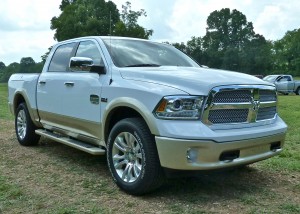
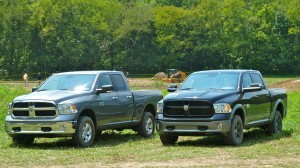

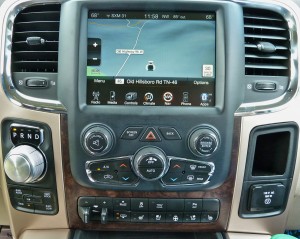
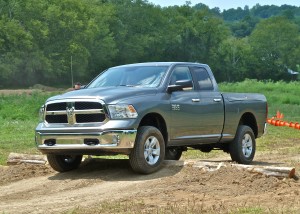
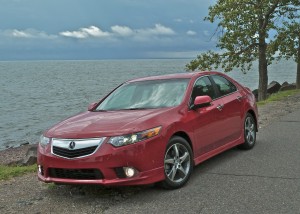
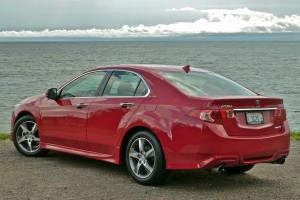
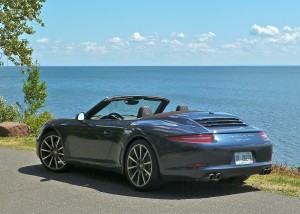
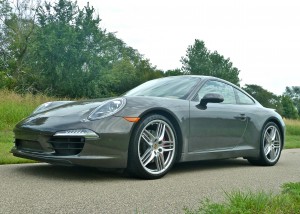
 John Gilbert is a lifetime Minnesotan and career journalist, specializing in cars and sports during and since spending 30 years at the Minneapolis Tribune, now the Star Tribune. More recently, he has continued translating the high-tech world of autos and sharing his passionate insights as a freelance writer/photographer/broadcaster. A member of the prestigious North American Car and Truck of the Year jury since 1993. John can be heard Monday-Friday from 9-11am on 610 KDAL(www.kdal610.com) on the "John Gilbert Show," and writes a column in the Duluth Reader.
John Gilbert is a lifetime Minnesotan and career journalist, specializing in cars and sports during and since spending 30 years at the Minneapolis Tribune, now the Star Tribune. More recently, he has continued translating the high-tech world of autos and sharing his passionate insights as a freelance writer/photographer/broadcaster. A member of the prestigious North American Car and Truck of the Year jury since 1993. John can be heard Monday-Friday from 9-11am on 610 KDAL(www.kdal610.com) on the "John Gilbert Show," and writes a column in the Duluth Reader.